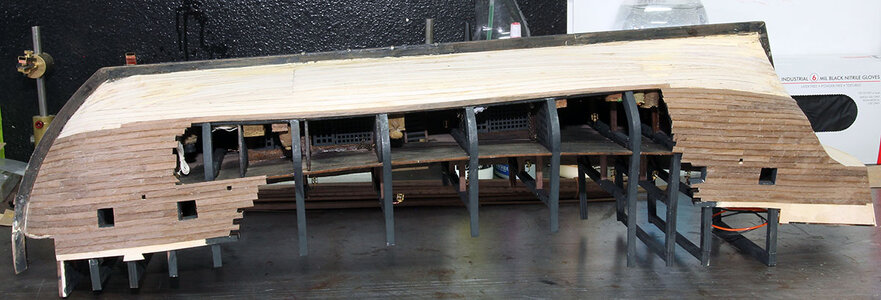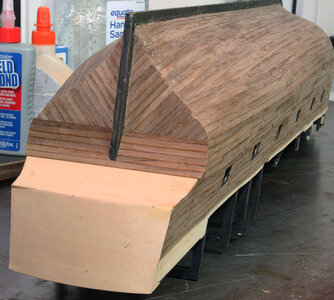yikes, 750F .... seems like that would burn out the LEDs.
Apparently it works though.
A video of the soldering job would be great help.
Apparently it works though.
A video of the soldering job would be great help.

 |
As a way to introduce our brass coins to the community, we will raffle off a free coin during the month of August. Follow link ABOVE for instructions for entering. |
 |
 |
The beloved Ships in Scale Magazine is back and charting a new course for 2026! Discover new skills, new techniques, and new inspirations in every issue. NOTE THAT OUR FIRST ISSUE WILL BE JAN/FEB 2026 |
 |

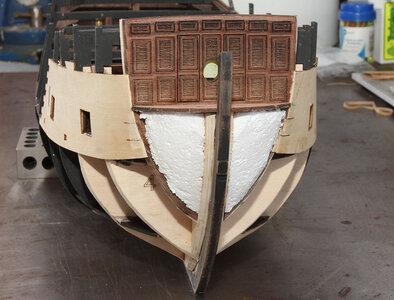
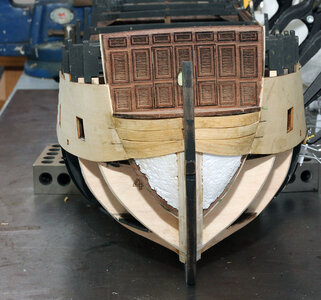
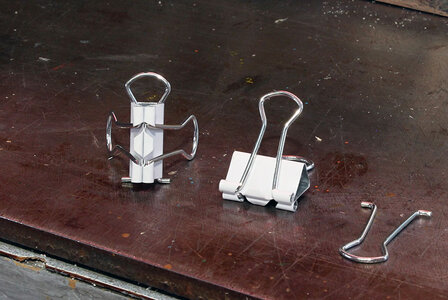
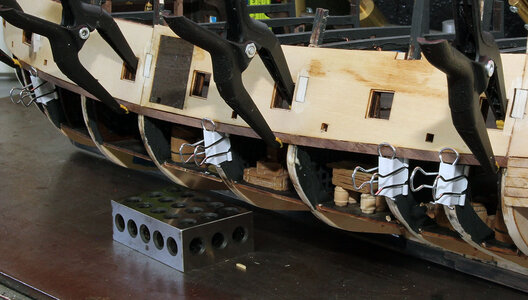
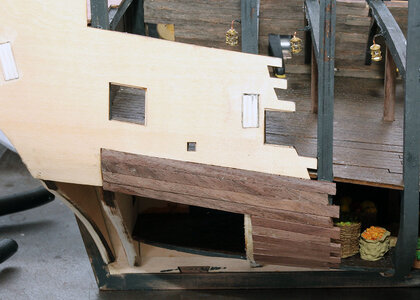
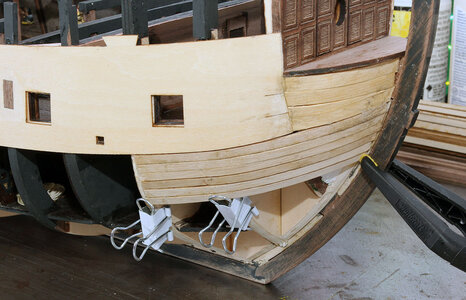
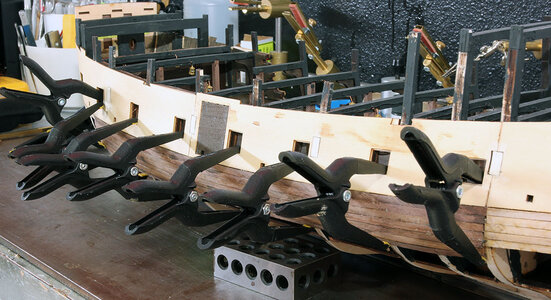

I tried the binder clip thing when I was doing the planking’ on my Black Pearl. Didn’t seem to hold the planking down as firmly as I would have liked so I ended up using push pins. How did yours work out?Next up it was time to do some planking. So I got my clamps out. Most people have seen this I would imagine but figured it wouldn’t hurt to show it. These clamps are just Binder clips from the office supply store. You can take the handles off of one and place it I another clip to make a planking clamp.
View attachment 183401
In the photo below you can see how the binder clips work.
View attachment 183402
The instructions are really ambiguous about how many planks to put where. I spent a lot of time going back and forth through the photos in the manual trying to figure out how many of what type of planks went where. I can’t say I really figured it out so much as I just developed a strategy and went for it. I was working on the starboard on the front and back and the stern on the port side lower deck area all at the same time. This allowed me to work continuously by going from one area to the next.
View attachment 183403
View attachment 183404
You can see in this photo that by not installing the guns and other items on the gun deck I was able to utilize the gun ports for clamping.
View attachment 183405

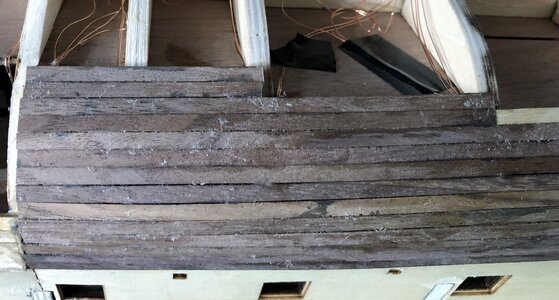
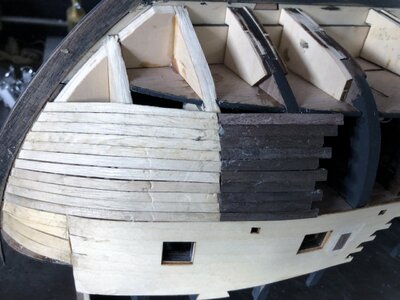
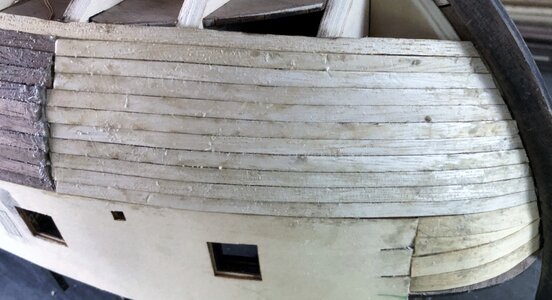
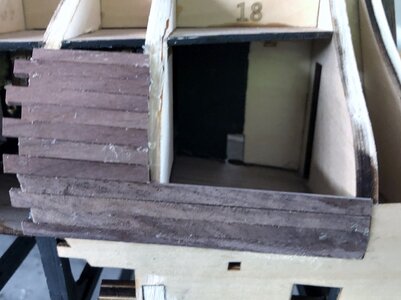
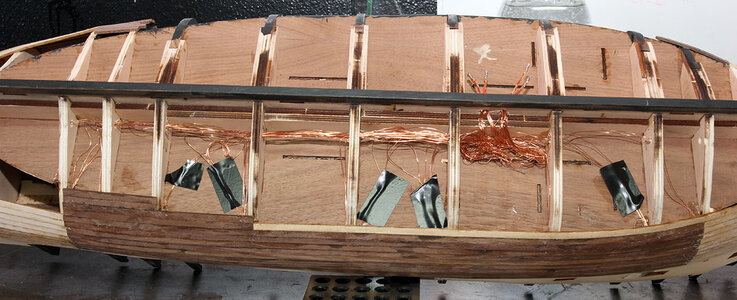
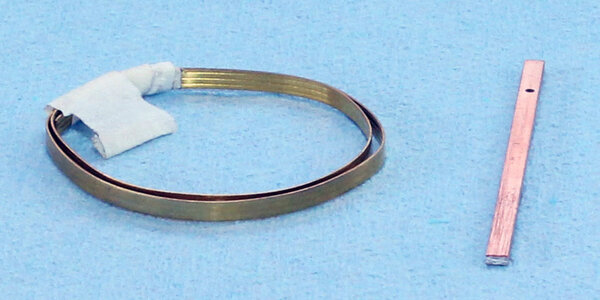
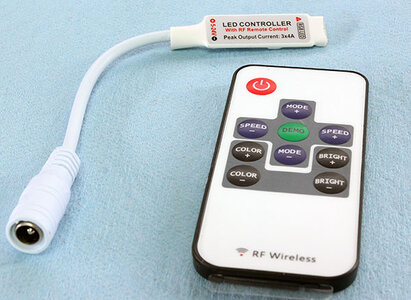
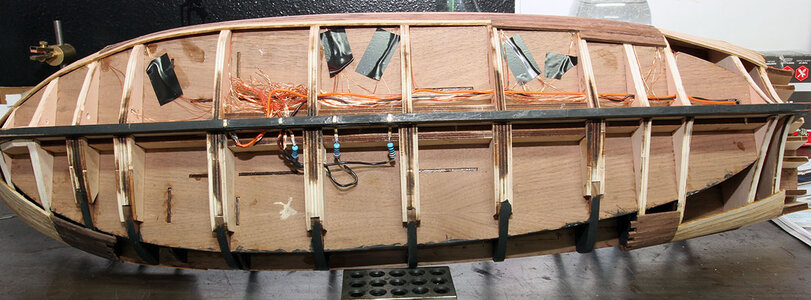
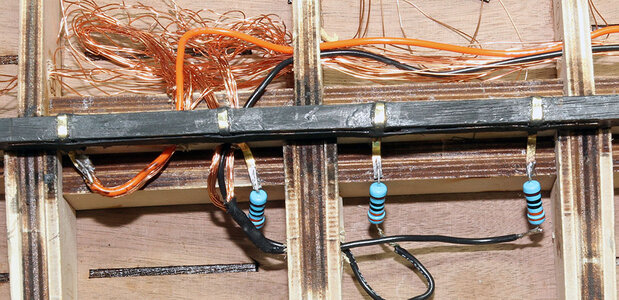
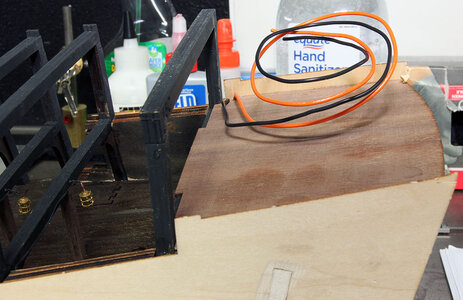
Are you going to put straps on to attach cannon to carriage? What about rigging the cannon?I also stained the buckets and barrels with black stain. I wanted it to be random and inconsistent so instead of painting it on, I just put a little bit in a plastic bag rolled the stuff around in it.
View attachment 182208
And here’s the results
View attachment 182209
So I spent quite a few days thinking on how to decorate the canon. Being as I’m going with the weathered look for the whole build I decided to try a faded red with patina on the barrel. I used Tamiya acrylic Nato Black paint on the barrel. Then the green patina is just weathering powder.
I made a wash of dark red paint about 80% water and 20 percent paint and then dipped the carriage in it.
View attachment 182210
And the final result
View attachment 182211
I will add more detail before I mount the canon this was just to figure the process out. I then did 18 more canon that way.
View attachment 182212
At this point I stopped and got the manual out. I do this periodically to figure out what I have done or missed etc. As I’ve mentioned before the photos in the manual at times seem to be kind of all over the place. Technically I’m at step 135 in the manual. This is one of those better have everything the way you want it before you go forward steps. It’s putting the Main deck in.
Now I know I’m not really ready because I haven’t put much of anything on the gun deck. So according to the instructions I skipped the following steps.
97 & 98 which is the 2 hammocks in the instructions. Not sure I want to do those at all but didn’t see a need to do them that early.
109 which is barrels and boxes that I didn’t want to put in until the guns are in place.
110-111 I really did this but didn’t cross it off because it’s the bow where I cut the wood off and I still need to build some filler blocks.
And last Step 120 which is the canons, canon balls etc..
So I have everything together to decorate the gun deck with the exception of ropes to hold the canons and any other minor details I want to put on this level.

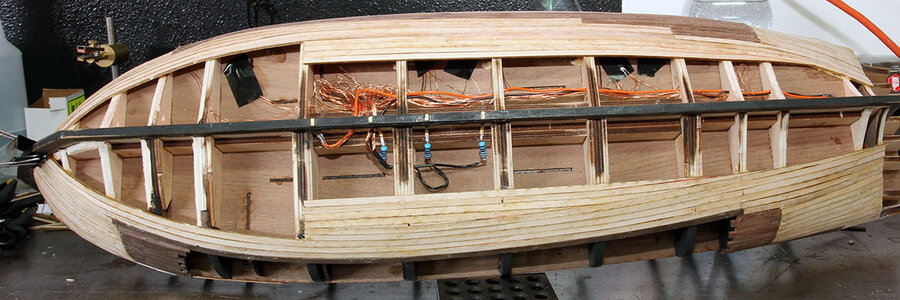

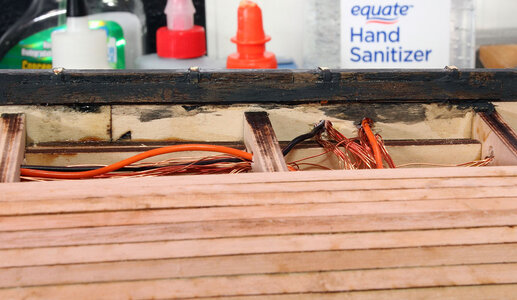
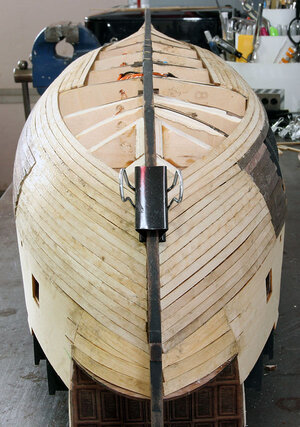
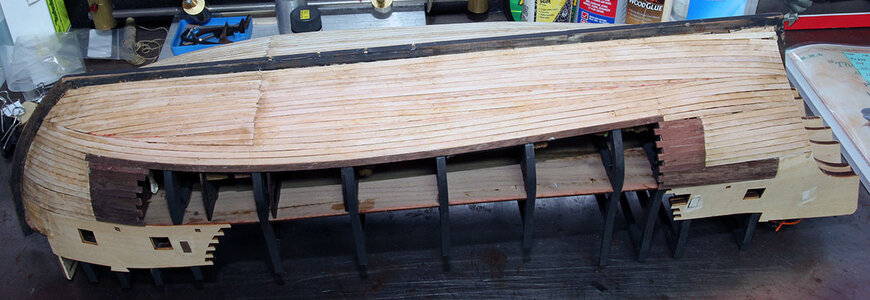

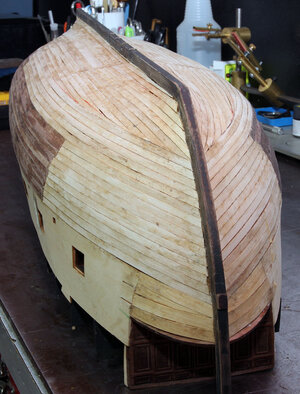
It seems different to use two different kinds of wood for the first layer of planking the hull.This isn't the "pirated" "pirated" version. There are lot of Black Pearl threads it's easy to get them mixxed up. I do have the junk version but never tried to build it. Here's the log for the "pirated" "pirated" version. I also have a really tiny one that has tons of photoetch and resin cast figurehead and statues etc that might actually be buildable. It's overall length is about 14 inches. I may try to build it eventually.
This is the $600 ZHL version (with shipping) it's about three times the size of the cheap knockoff.
You could probably leave most of the boxes and stuff out and put them in after it's finished, but it would make it really difficult. The gun deck would be extremely challenging but could be done I would imagine. Even with this huge model there is still only about 2 inches between decks. I was a little concerned about all the dust from sanding the hull, but I just used my air compressor to blow it out after sanding and it looks fine.
On the planking it'll be a little of both. I added some filler in the next step, and then there is another layer of planking so when that is on it'll be closer to matching the outer line of the deck. Once that is on I'll sand the edge of the deck down to match the planking.
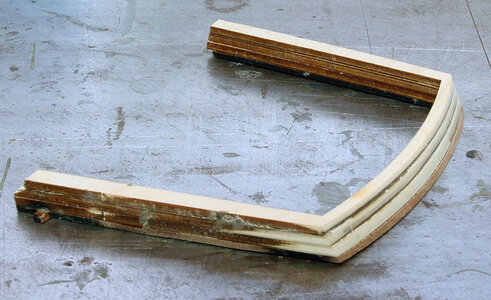
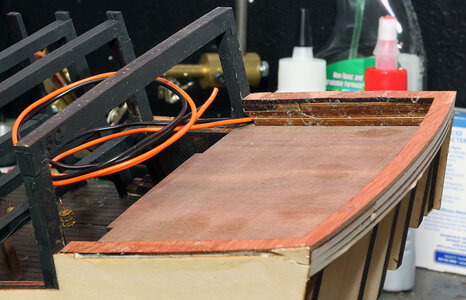
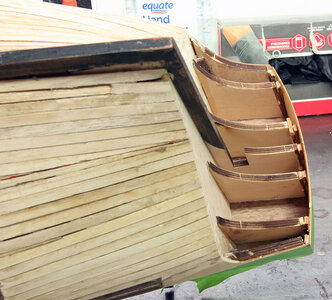
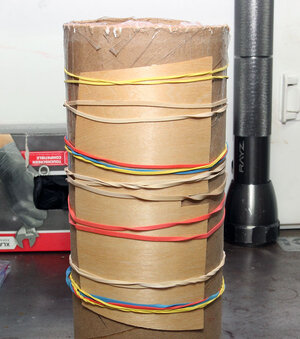
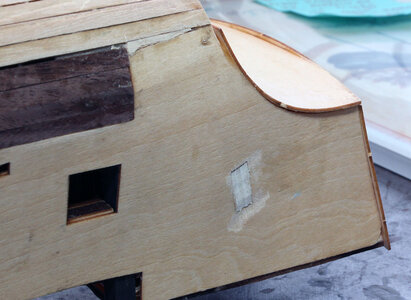
This isn't the "pirated" "pirated" version. There are lot of Black Pearl threads it's easy to get them mixxed up. I do have the junk version but never tried to build it. Here's the log for the "pirated" "pirated" version. I also have a really tiny one that has tons of photoetch and resin cast figurehead and statues etc that might actually be buildable. It's overall length is about 14 inches. I may try to build it eventually.
This is the $600 ZHL version (with shipping) it's about three times the size of the cheap knockoff.
You could probably leave most of the boxes and stuff out and put them in after it's finished, but it would make it really difficult. The gun deck would be extremely challenging but could be done I would imagine. Even with this huge model there is still only about 2 inches between decks. I was a little concerned about all the dust from sanding the hull, but I just used my air compressor to blow it out after sanding and it looks fine.
On the planking it'll be a little of both. I added some filler in the next step, and then there is another layer of planking so when that is on it'll be closer to matching the outer line of the deck. Once that is on I'll sand the edge of the deck down to match the planking.

Heinrich - Funny you should mention that rite now. I'm actually just catching this log up with where I really am in the building process. Things will slow down some now. Particularly with the other projects I'm working on. However I do have an update tonight.Nice work Jodie. You are progressing at a rate of knots!
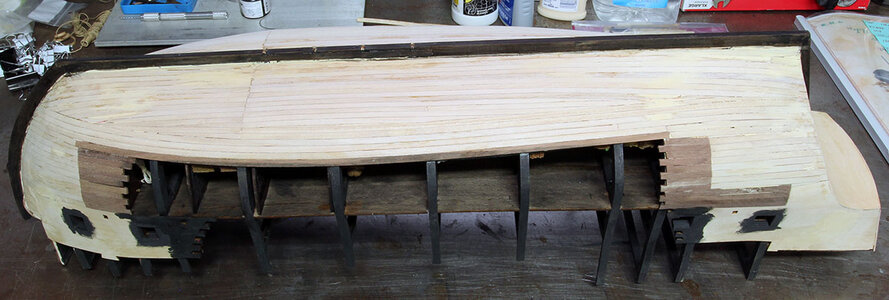

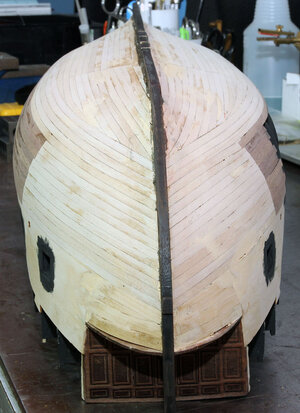
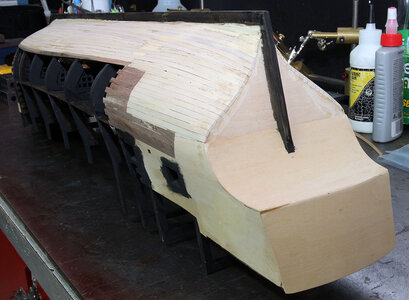
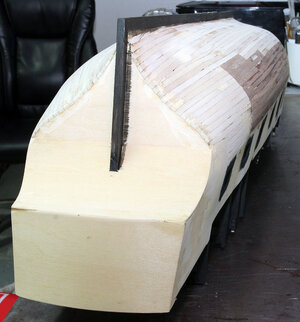



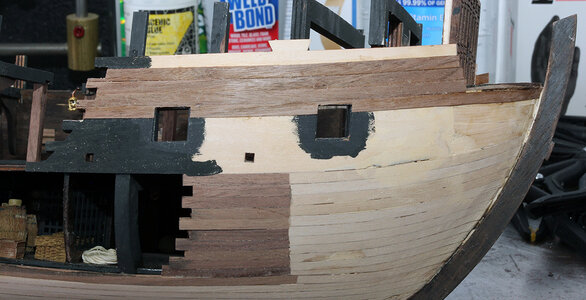
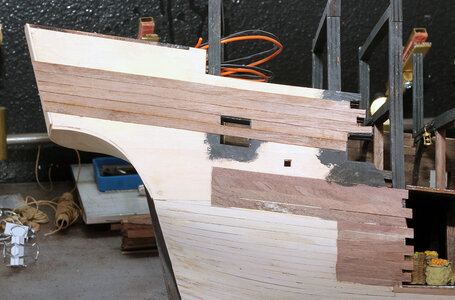
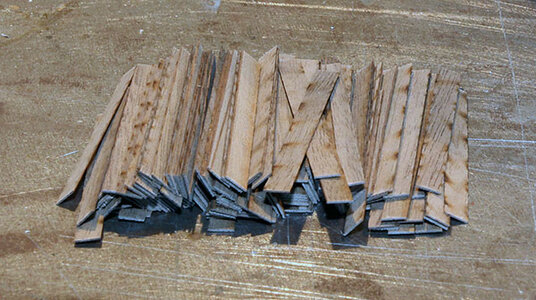


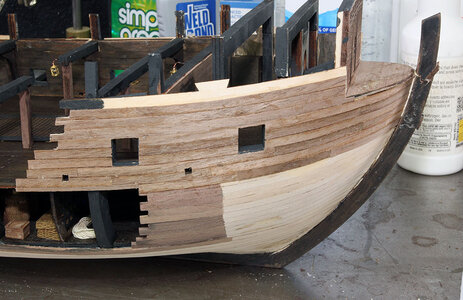
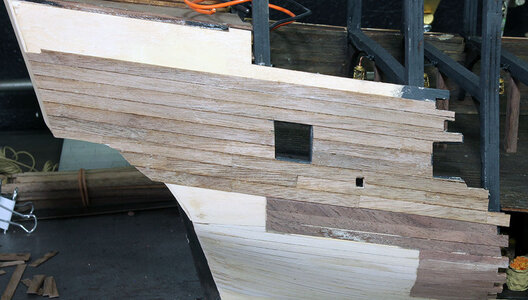

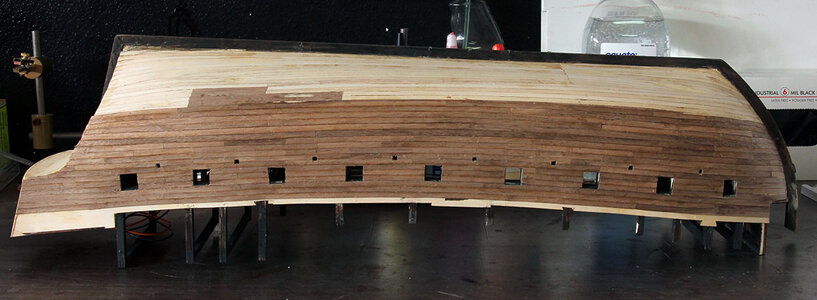
You’re taking “shiver me timbers” quite literally. Is that why you didn’t have guns installed on the gun deck already? Precognition?So next I started on the outer layer of planking. After examining the photos in the manual I decided the best way to locate the planking would be to use the top of the plywood sides, and then going down the width of 1 plank. I did that because there are a couple notches where the upper plywood skins are keyed into the lower plywood that is already on the model. I planked from that point down into the gun ports and then cut the top of the gun ports out. This gave me a start on where the gun ports are.
View attachment 185037
View attachment 185038
Then started planking on down
View attachment 185039
At his point the bend of the planks was getting fairly radical and the planks wanted to lift up off the hull on one side. I decided instead of fighting the way the planks wanted to twist up, I’d just plank shorter sections. So I cut 24 strips into pieces about 2.1 inches long. This is the longest distance between the gun ports.
View attachment 185040
I planked down just into where the sweep ports are and then cut out the lower portion of the gun ports and the upper portion of the sweep ports. The farthest forward sweep ports were just barely into the planking but it was enough to locate them for trimming later.
View attachment 185041
View attachment 185042
Then put on a couple more planking runs and after it dried I cut the sweep ports the rest of the way out. When I got the sweep ports cut out I was cleaning the bench and holding the ship in one hand. This was when It slipped and I pretty much threw the ship halfway across the garage landing on the rear of the keel and then flipping over and slamming the front into the concrete.
I was afraid this may be the end of my Black Pearl build; however upon further examination. While the keel and the top of the stem obviously needed some repair work, beyond that the only damage was knocking one of the metal grates out.
So a half hour later I had the keel and stem glued back on and the metal bars back in. One final thing was to check the leds, and they all still light up. So everything turned out okay. You can see where I glued the stem back together and added a chunk of wood in the photo above.
View attachment 185043
View attachment 185044
View attachment 185045
Reminded me of when I was in the Navy. When they build a new class of ship they do a shock test by taking the ship out in the ocean and setting of a large explosion in the water near it to see what flies off the wall. So the shock test has been completed no need to throw it down on the concrete again.
On the port side I planked down a couple more rows and then started just using the short pieces on the bow and longer ones toward the stern. Here’s where I stopped yesterday.
View attachment 185046
Yep, see beginning of post 53. I discussed that I was going to deviate from the plans because I thought the canons etc. would be in the way. I'm convinced that was a good decision at this point.You’re taking “shiver me timbers” quite literally. Is that why you didn’t have guns installed on the gun deck already? Precognition?

